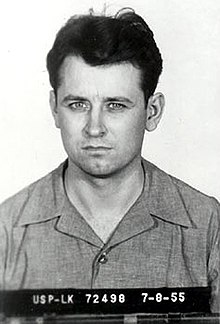
Martin Luther King Jr. was an American Baptist minister, activist, and political philosopher who was one of the most prominent leaders in the civil rights movement from 1955 until his assassination in 1968. A black church leader and a son of early civil rights activist and minister Martin Luther King Sr., King advanced civil rights for people of color in the United States through the use of nonviolent resistance and nonviolent civil disobedience against Jim Crow laws and other forms of legalized discrimination.
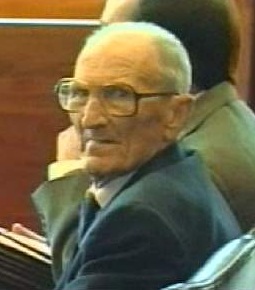
Loyd Jowers was an American restaurateur and the owner of Jim's Grill, a restaurant near the Lorraine Motel in Memphis, Tennessee, where Martin Luther King Jr. was assassinated in 1968. For the first 25 years after the assassination of King, Jowers testified that he was in the restaurant at the time of the assassination, a fact supported by the other witnesses in the restaurant.

Dexter Scott King was an American civil and animal rights activist, attorney, and author. The second son of civil rights leaders Martin Luther King Jr. and Coretta Scott King, he was also the brother of Martin Luther King III, Bernice King, and Yolanda King; and also grandson of Alberta Williams King and Martin Luther King Sr. He is the author of Growing Up King: An Intimate Memoir.

The National Civil Rights Museum is a complex of museums and historic buildings in Memphis, Tennessee; its exhibits trace the history of the civil rights movement in the United States from the 17th century to the present. The museum is built around the former Lorraine Motel, which was the site of the 1968 assassination of Martin Luther King Jr. Two other buildings and their adjacent property, also connected with the King assassination, have been acquired as part of the museum complex.
J. Wyeth Chandler served as mayor of Memphis, Tennessee from 1972 to 1982. He was the adopted son of former Memphis mayor and U.S. Representative Walter Chandler. Chandler succeeded the controversial Henry Loeb, who battled local sanitation workers during a strike that brought Martin Luther King Jr. to Memphis in April 1968.
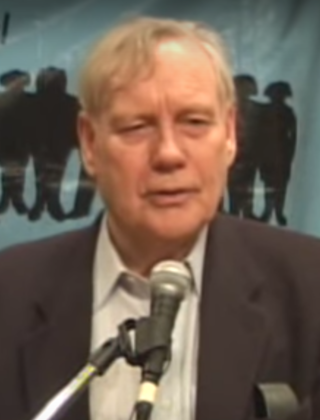
William Francis Pepper was an American lawyer who was based in New York City and noted for his efforts to prove government culpability and the innocence of James Earl Ray in the assassination of Martin Luther King, Jr.. Pepper also tried to prove the innocence of Sirhan Sirhan in the assassination of Robert F. Kennedy. He was the author of several books, and had been active in other government conspiracy cases, including the 9/11 Truth movement, and had advocated that George W. Bush be charged with war crimes.
Frederick Tupper Saussy III was an American composer, musician, author, artist, and conspiracy theorist. He was a self-styled theologian, restaurant owner, ghostwriter of James Earl Ray's biography, King assassination conspiracy theorist, anti-government pamphleteer, and radical opponent of the federal government’s taxation and monetary authority.
James W. "Jim" Douglass is an American author, activist, Christian theologian, and investigative journalist. He is a graduate of Santa Clara University. He and his wife, Shelley Douglass, founded the Ground Zero Center for Nonviolent Action in Poulsbo, Washington, and Mary’s House, a Catholic Worker house in Birmingham, Alabama. In 1997 the Douglasses received the Pacem in Terris Award.
The John F. Kennedy's assassination and the subsequent conspiracy theories surrounding it have been discussed, referenced, or recreated in popular culture numerous times.
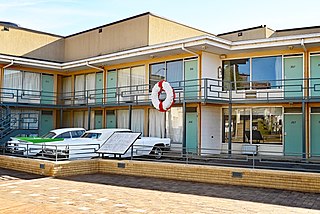
Martin Luther King Jr., an African-American clergyman and civil rights movement leader, was fatally shot at the Lorraine Motel in Memphis, Tennessee, on April 4, 1968, at 6:01 p.m. CST. He was rushed to St. Joseph's Hospital, where he died at 7:05 p.m. He was a prominent leader of the civil rights movement and a Nobel Peace Prize laureate who was known for his use of nonviolence and civil disobedience. James Earl Ray, a fugitive from the Missouri State Penitentiary, was arrested on June 8, 1968, at London's Heathrow Airport, extradited to the United States and charged with the crime. On March 10, 1969, he pleaded guilty and was sentenced to 99 years in the Tennessee State Penitentiary. He later made many attempts to withdraw his guilty plea and to be tried by a jury, but was unsuccessful. Ray died in prison in 1998.
Arthur J. Hanes served as mayor of Birmingham, Alabama, between 1961 and 1963, a tumultuous time that saw the city become a focal point in the burgeoning Civil Rights Movement during the Birmingham campaign. Hanes, who served just one term as mayor, was part of a three-man commission that ran the city, a trio which included police commissioner Eugene (Bull) Connor. Hanes would also serve as legal counsel for defendants in two important murder cases connected to the civil rights movement.
William Noel Morris, known as Bill Morris, is a Tennessee politician who served as mayor of Shelby County, Tennessee, including the city of Memphis. He also was a sheriff of the Shelby County Sheriff's Office. He was the president of the Tennessee County Services Association, an organization of county officials.
"The Promised Land" is an episode from the police drama television series New York Undercover, and was first broadcast on February 20, 1997 on Fox. Written by Reggie Rock Bythewood and directed by Don Kurt, it is the 17th episode of the third season, and the 69th episode of the series.
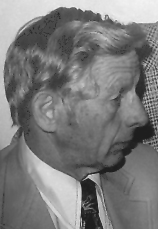
John Karl Kershaw was an American attorney best known for challenging the official account of the assassination of Martin Luther King, Jr. in 1968, claiming that his client James Earl Ray was an unwitting participant in a ploy devised by a mystery man named Raul to kill the civil rights leader.
The Martin Luther King Jr. Records Collection Act, or MLK Records Act, is proposed legislation that would release United States government records pertaining to the life and death of Martin Luther King Jr. Versions of the law have been proposed on multiple occasions, and a complete version was brought to both chambers of the United States Congress in 2005–2006.
Harold Weisberg served as an Office of Strategic Services officer during World War II, a U.S. Senate staff member and investigative reporter, an investigator for the Senate Committee on Civil Liberties, and a U.S. State Department intelligence analyst who devoted 40 years of his life to researching and writing about the assassinations of John F. Kennedy and Martin Luther King. He wrote ten self-published and published books and approximately thirty-five unpublished books related to the details for those assassinations, mostly with respect to Kennedy's assassination.
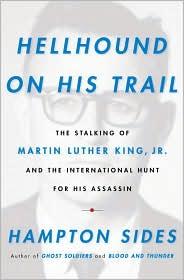
Hellhound on His Trail (Doubleday), 2010, is a nonfiction book written by author Hampton Sides, focusing on the characters and events surrounding the assassination of Martin Luther King Jr. Using multiple narratives, Hellhound is an attempt at exploring the psychology and emotion that dominated and divided the United States during the Civil Rights Movement.

W. Hickman Ewing Jr. is an American attorney. Ewing served as the United States Attorney for the western district of Tennessee from 1981 to 1991. He later served as the special prosecutor overseeing the Whitewater investigation.

Conspiracy theories about the assassination of Martin Luther King Jr., a prominent leader of the civil rights movement, relate to different accounts of the incident that took place on April 4, 1968, in Memphis, Tennessee. King was assassinated on the balcony of the Lorraine Motel, the day after giving his final speech "I've Been to the Mountaintop". Claims soon arose over suspect aspects of King's assassination and the controversial role of the assassin, James Earl Ray. Although his guilty plea eliminated the possibility of a trial before a jury, within days, Ray had recanted and claimed his confession was forced. Suspicions were further raised by the confirmation of illegal surveillance of King by the FBI and the CIA, and the FBI's attempt to allegedly prompt King to commit suicide.
The Loyd Jowers trial, known as King family v. Jowers and other unknown co-conspirators, was an American wrongful death lawsuit brought to trial by the family of Martin Luther King Jr. against Loyd Jowers. The family filed the lawsuit after Jowers admitted on national TV that he had been part of a conspiracy to assassinate the civil rights leader on April 4, 1968. The trial occurred in late 1999. The jury unanimously agreed there was a conspiracy perpetrated by Jowers and other parties, including various government agencies, to murder King and frame James Earl Ray as a patsy.
